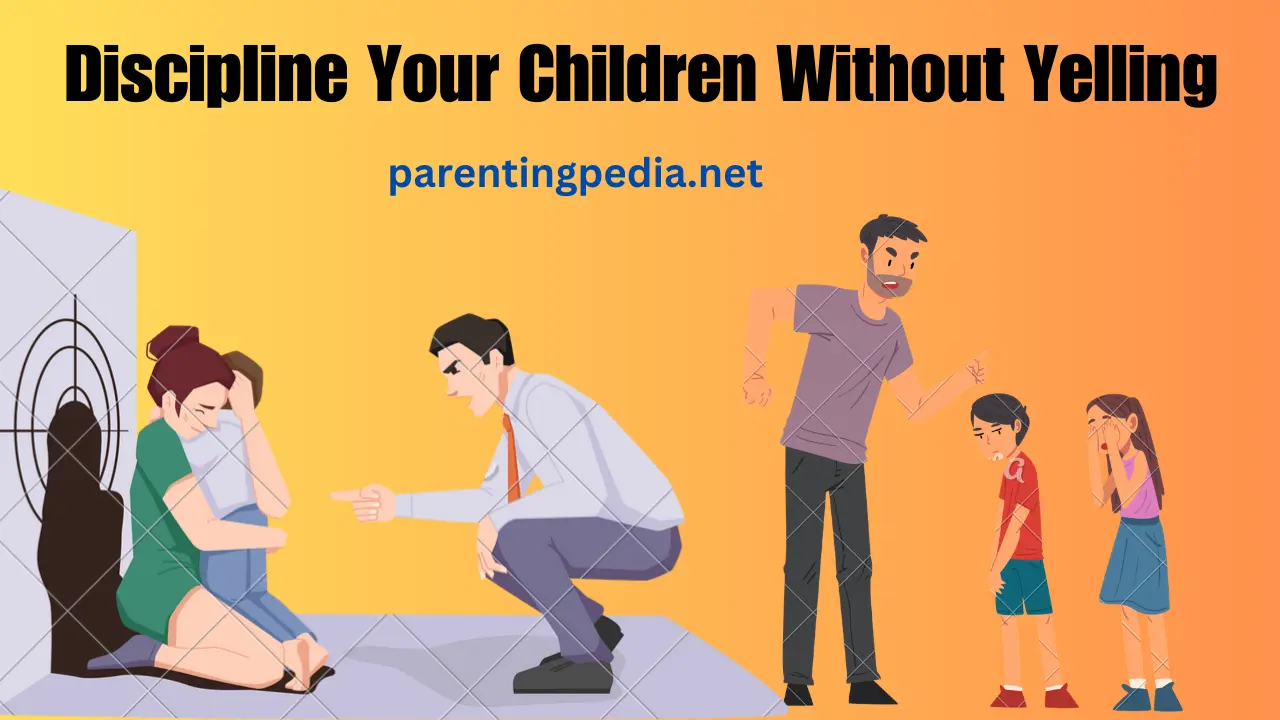Discover effective ways to discipline your toddler without yelling. Learn how to get kids to listen without raising your voice and establish positive discipline techniques. Disciplining children is an inevitable part of parenting, but it doesn’t have to involve raising your voice or resorting to physical punishment. There are effective ways to discipline kids without yelling that can help your child learn and grow in a positive environment. In this blog post, we’ll explore various strategies, grounded in positive parenting, to discipline your children without resorting to harsh verbal discipline or hitting. Find below, Tips on How to Discipline Your Children Without Yelling
Understanding the Need for Discipline Without Yelling:
Discipline is not about punishment; it’s about teaching children right from wrong, helping them understand consequences, and fostering self-discipline. Yelling at children may provide a temporary solution, but it often leads to negative consequences, including strained relationships, low self-esteem, and increased aggression in kids. Let’s delve into some practical tips on how to discipline your children without yelling or physical punishment.
- Set Clear Expectations: Begin by establishing clear expectations for your child’s behavior. Make sure they understand what is considered acceptable and what is not. Age-appropriate expectations help children know right from wrong and contribute to a more positive environment.
- Use Positive Reinforcement: Instead of focusing on the negative aspects of your child’s behavior, emphasize the positive. Praise them when they exhibit good behavior, reinforcing the idea that positive actions lead to positive outcomes. Positive reinforcement is a powerful tool in guiding your child toward the desired behavior without yelling.
- Implement Time-Outs Effectively: Time-outs can be an effective strategy when used correctly. Rather than using it as a punishment, frame it as a moment for your child to cool down and reflect on their actions. This approach allows for a break in the situation without resorting to yelling or harsh discipline.
- Natural Consequences: Letting children experience the natural consequences of their actions can be a valuable learning experience. It helps them understand the impact of their behavior without imposing external punishment. This approach promotes responsibility and self-discipline.
- Stay Calm and Connected: It’s crucial to stay calm when addressing your child’s misbehavior. Yelling can escalate the situation, making it more challenging for your child to understand the lesson. Stay connected with your child emotionally, even when addressing their misbehavior, to create a supportive environment for learning.
- Ask Questions to Understand: Instead of immediately reacting to your child’s behavior, ask questions to understand the reasons behind their actions. This approach promotes communication and helps you address the root cause of misbehavior, fostering a more effective and compassionate way to discipline.
Frequently Asked Questions (FAQs):
Q1: What’s the best way to discipline a toddler without yelling? A1: The best way to discipline a toddler without yelling is to set clear expectations, use positive reinforcement, implement time-outs effectively, and stay calm and connected. Understanding the developmental stage of toddlers and using age-appropriate discipline strategies is essential.
Q2: How can I help my child learn without resorting to physical punishment? A2: You can help your child learn by setting clear expectations, using positive reinforcement, implementing time-outs when needed, and allowing natural consequences. Physical punishment is not necessary and can have detrimental effects on a child’s well-being.
Q3: What are some effective ways to discipline older children without yelling? A3: Effective ways to discipline older children without yelling include using clear expectations, positive reinforcement, implementing age-appropriate consequences, and maintaining open communication. Tailor your approach to the individual needs and understanding of your older child.
Q4: How can I get my child to listen without raising my voice? A4: To get your child to listen without raising your voice, use clear communication, positive reinforcement, and effective listening skills. Encourage open dialogue and understanding, fostering a relationship built on respect and cooperation.
Q5: Is time-out an effective discipline strategy? A5: Time-out can be an effective discipline strategy when used appropriately. It provides a break for both the parent and the child, allowing emotions to settle. However, it’s crucial to frame time-out as a moment for reflection rather than punishment.
Q6: How do I handle big emotions and tantrums without yelling? A6: When faced with big emotions and tantrums, remain calm and empathetic. Acknowledge your child’s feelings and provide them with words to express their emotions. This helps them feel heard and understood, reducing the likelihood of escalation.
Q7: What if my child won’t listen no matter what I do? A7: If your child consistently won’t listen, reassess your communication and discipline strategies. Consider adjusting your approach, asking open-ended questions to understand their perspective, and actively involving them in finding solutions to issues.
Q8: How can I discipline my child without making them feel shamed? A8: Avoid shaming your child by focusing on their behavior rather than labeling them. Offer constructive feedback, emphasizing the importance of making better choices next time. This approach helps your child learn from their actions without feeling personally attacked.
Additional Tips for Positive Discipline:
1. Use Age-Appropriate Discipline:
Tailor your disciplinary approach to your child’s age and developmental stage. What works for a toddler may not be effective for an older child. Adjust your strategies to match your child’s understanding and abilities.
2. Create Clear Boundaries:
Establish clear boundaries for acceptable behavior, ensuring your child understands the consequences of crossing those boundaries. Consistency in enforcing boundaries contributes to a sense of security for your child.
3. Encourage Self-Control:
Teach your child self-control by modeling it yourself. Demonstrate how to manage emotions, cope with frustration, and make thoughtful decisions. Encouraging self-control empowers your child to handle challenges effectively.
4. Positive Parenting Techniques:
Embrace positive parenting techniques that focus on nurturing a strong parent-child bond. Use encouragement, active listening, and mutual respect to foster a positive environment where discipline becomes a natural part of the learning process.
5. Avoid Physical Punishment:
Refrain from using physical punishment, as it can have long-lasting negative effects on a child’s mental and emotional well-being. Instead, focus on communication and understanding to guide your child toward positive behavior.
6. Promote Natural Consequences:
Allow your child to experience the natural consequences of their actions whenever possible. This approach helps them connect their behavior to the outcomes without the need for external punishment.
Conclusion:
Disciplining children without yelling is not only possible but also a crucial aspect of positive parenting. By setting clear expectations, using positive reinforcement, implementing effective time-outs, and staying connected with your child, you can guide them toward positive behavior without resorting to harsh discipline. Remember, discipline is about teaching and guiding, not punishing. Embrace these strategies to build a healthy and supportive relationship with your child while promoting their growth and development.
Remember, the greatest reward of parenting lies in watching
your children soar with love and confidence.
Till then keep smiling and be happy
Worth Reading
- Best of the web, when you’re a teen, asks for non-alcoholic beer and more
- Choosing the Best Musical Instrument for Children to Learn
- Finding Balance Becoming a Screen Smart Family
- When Life Sucks: A Conversation with Psychiatrist and Comedian Dr. Jo Prendergast
- Getting kids to talk about their feelings
- The case for banning corporal punishment of kids
- How Parents Can Help Kids Make Good Friends
- 13 Reasons Why? What Every Parent Needs to Know
- How to Get Your Teenager Off the Couch
- The Two Most Important Things You Can Say to Your Child
- 10 Tips to Help Your Teen Out of the Procrastination Trap
- Is your child being bullied, how parents can help?
- Taking care of emotions a guide for parents and their kids
- Getting Involved Parents Making a Difference
- How to manage your child’s self-criticism
ABCD
DFSHH
EFG
HHJGFJ

